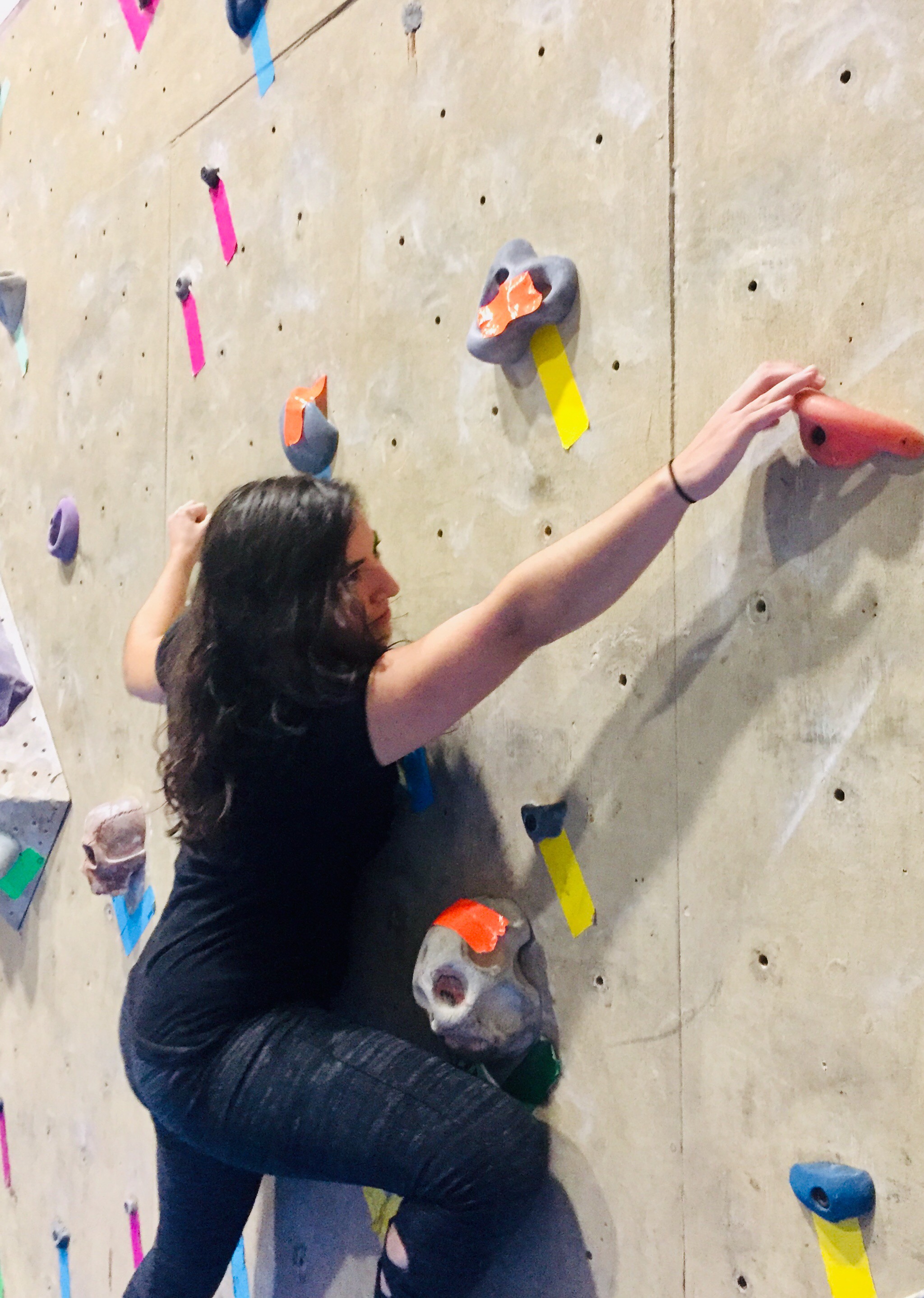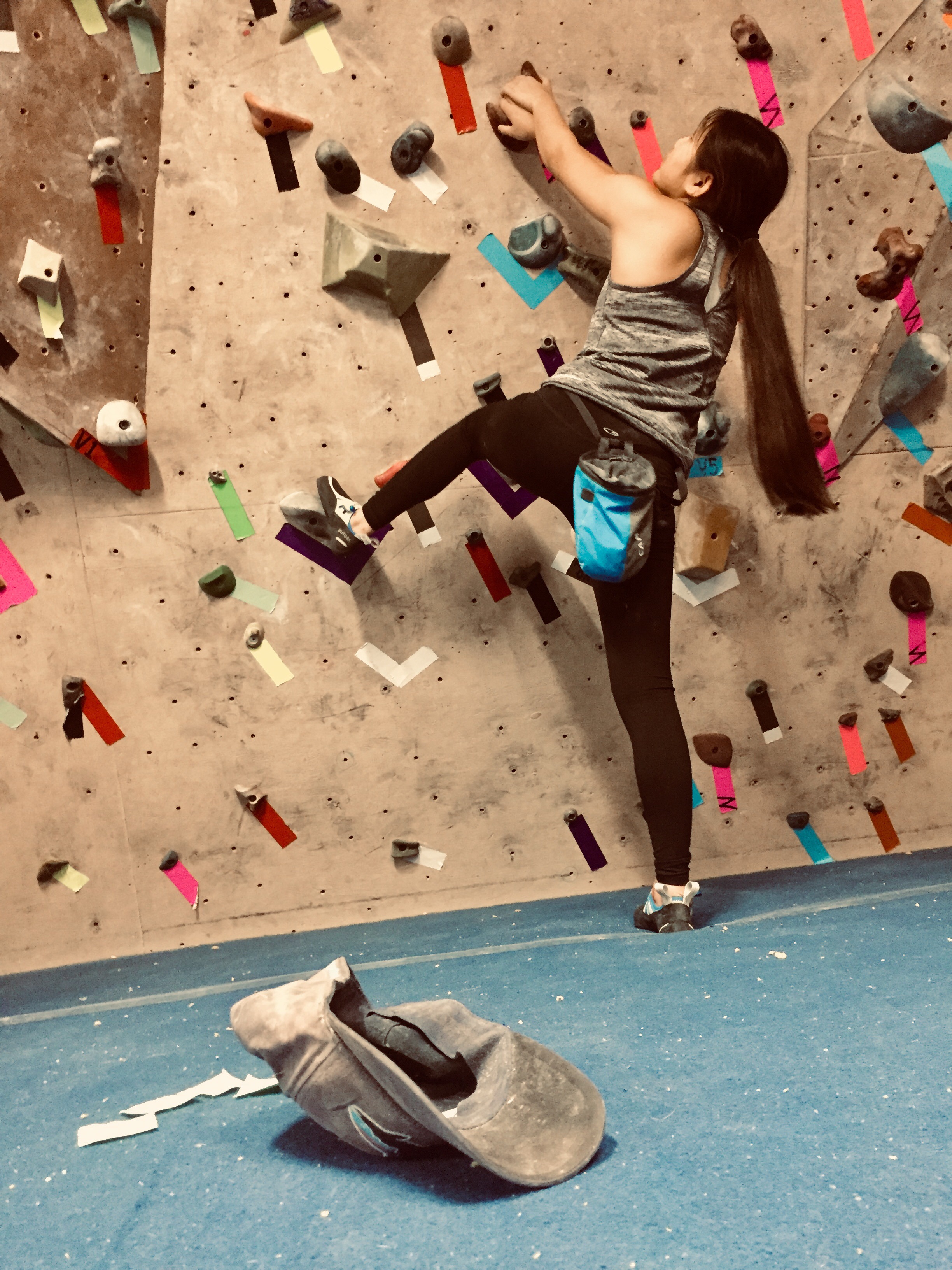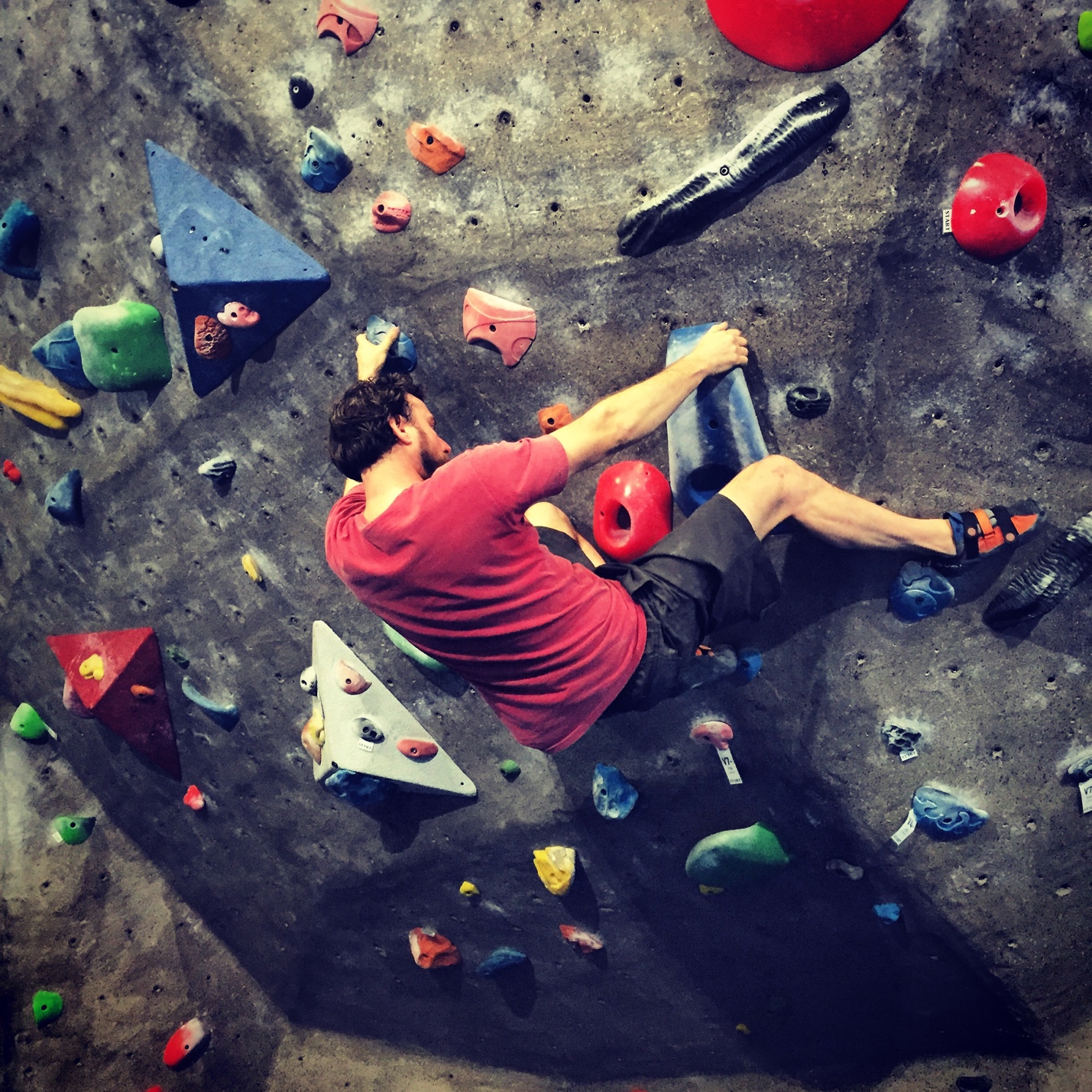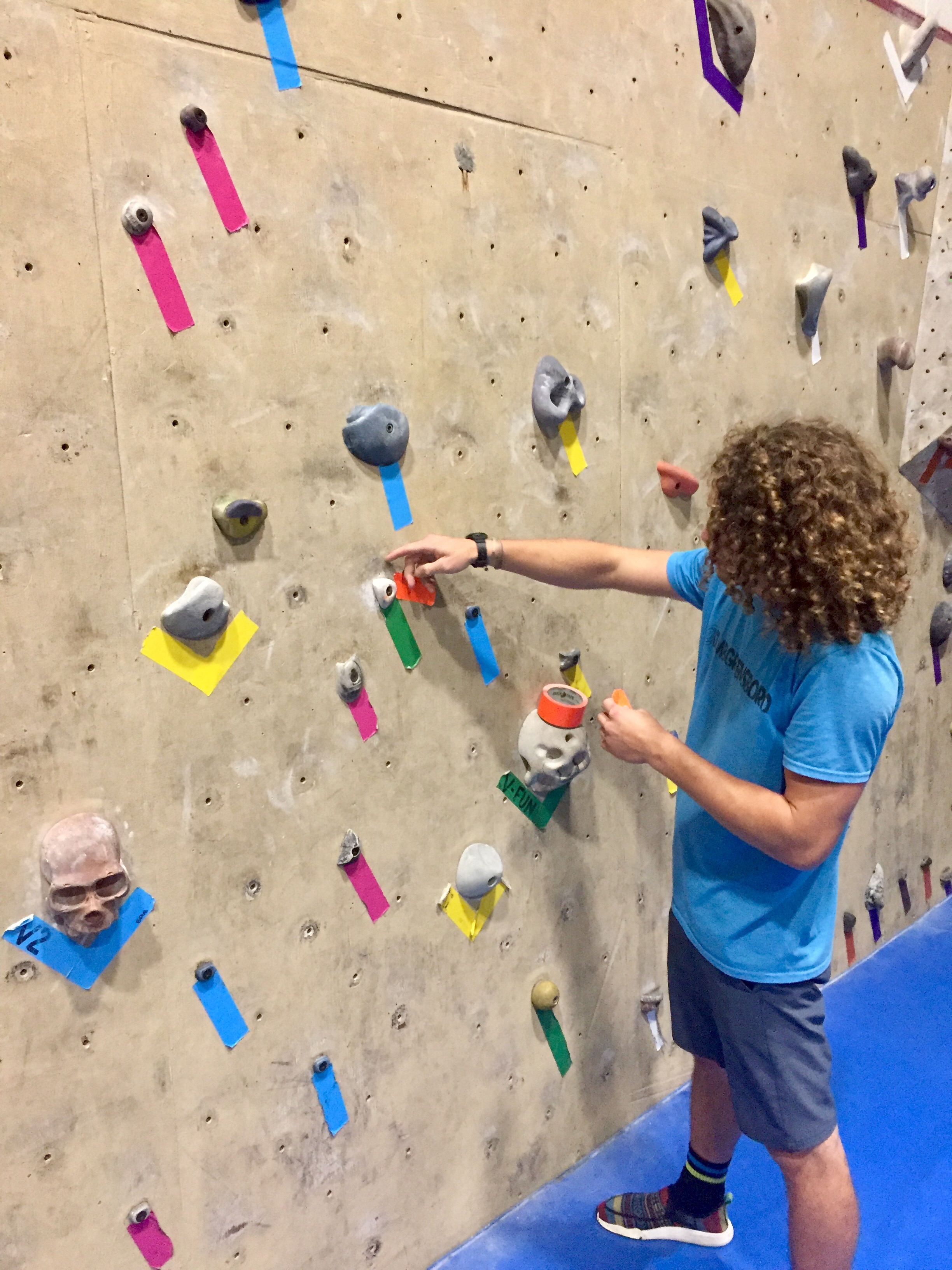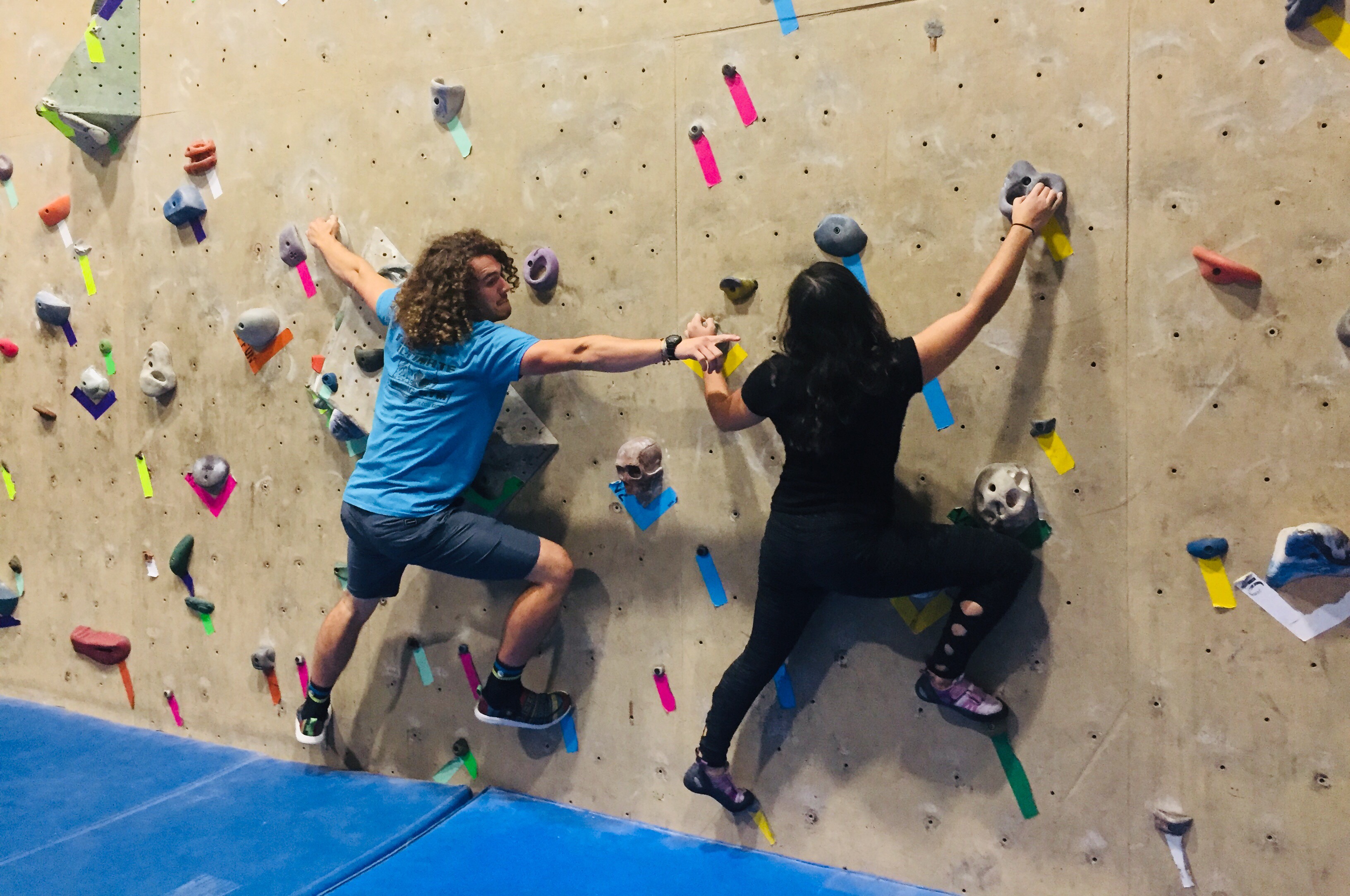Climbing is fun. Plain and simple.
If it wasn’t fun, then the sport of rock climbing wouldn’t have such a significant cult following.
But sometimes, even the most “fun” activities can start to feel a little stale, especially when you’ve been stuck in your local gym pulling on plastic for months through the winter as it still isn’t warm enough to climb outside yet.
“When will spring come?” You ask repeatedly while climbing the same routes and problems that were set in the gym three months ago.
We’ve all been there, but it doesn’t have to be that way - turn your boredom into practice with these 10 climbing games that are sure to boost your technique and your mood!
There are a number of climbing games you can play solo or with friends that will lift your bleak winter spirits and improve your climbing skills, all at the same time!
Let’s dive in and have some good old light-hearted fun on the wall.
1. Add-On (2 + players)
This is a game that every climber should play at some point in their climbing careers.
Add-On is a classic climbing game that teaches players the basics of creating unique routes.
It is a great game for team-building as well, and is a good way to push yourself and your friends / teammates in a fun and relaxed manner.
To Play
One climber starts the game by selecting a starting hand hold and making a single move to another hand hold.
The next player then makes the same first move and adds on a third hand hold (second move).
The next climber adds on another, and this continues on until no climber can complete the sequence or the problem reaches a natural finish (like the top of the wall).
If a climber falls off or can’t complete a move, then they are out for that round and are not allowed to add on another move.
This is traditionally played with open feet, but you can choose footholds with each move if you want the extra challenge!
2. Eliminator (1+ players)
The opposite of Add-On, Eliminator is a useful game for climbers who want to challenge themselves and their buddies to think about problems and routes in a new way.
This game focuses on problem solving and figuring out new beta with each move.
It also helps with honing your dynamic movements and can teach climbers the advanced technique of deadpointing, as well.
To Play
Choose a bouldering problem well within your skill level.
Climb it all the way through once, then choose a hold to “eliminate” and let the next climber attempt the problem without using the eliminated hold (or climb it again yourself if you’re playing alone).
If the next climber can’t complete the problem after a hold has been eliminated, then the turn goes to the next player until no one can complete the problem or all of the holds have been eliminated.
3. Lemon / Lime (1+ players)
This game will help you get super strong super fast so that someday you may be able to crack open a coconut with your burly climber hands!
Lemon / Lime is a great game for building endurance in general, and especially power-endurance, so you’ll be able to stay on harder climbs longer than you ever thought possible.
To Play
Choose a problem that’s doable for your skill level.
Make the first move of the problem, then go back to the start without coming off the wall.
Then make the first two moves, and reverse back to the start (again, without coming off). Keep climbing in this one step forward, two steps back fashion until you reach the top (the lemon!).
For the lime (and the coconut), follow the same technique as the lemon, but start at the top of the problem instead of the bottom and work your way down to the start move by downclimbing from the finish hold.
The end goal for the lime is to climb down from the top all the way to the start hold, then climb all the way to the finish again before hopping off the problem.
4. Lucky Draw (1+ players)
Lucky Draw is a game that concentrates on the creation of new sequences to improve critical thinking while climbing.
It also helps hone your understanding of the advantages and disadvantages of different types of moves and climbing techniques in order to make you a better all-around climber.
To Play
Write down 10 different climbing techniques on slips of paper (i.e. right / left arm lock off, drop-knee, gaston, heel hook, toe hook, left / right hand dyno, etc).
Pull four slips out of the bag at a time, then try to create a problem that uses all of those four movements.
You can challenge your friends to attempt your sequence and continue shuffling the slips of paper indefinitely to have a wide variety of original problems to choose from, all of which should focus on the key techniques required for climbing well.
5. Tape Game (AKA Hot Lava) (1+ Players)
Similar to Eliminator, the Hot Lava Tape Game focuses on eliminating useful holds on the wall to help you find and create your own unique routes and help with endurance and problem-solving while climbing.
This game can be played alone, but it’s a lot more fun when you have a couple of friends helping you eliminate the holds that seem the most necessary, thereby challenging all of you to climb with intelligence and prepare for the unknown!
To Play
One person begins by traversing a length of wall (vertical or horizontal, but easier played on a horizontal stretch of wall).
If they make it to the end without falling off, then they get to choose a hold (hand or foot) to mark off as “lava” with a piece of colored tape.
The next climber then traverses the wall without using the taped off “lava hold.”
Again, if they successfully make it through the traverse without falling or touching the marked off hold, then they get to tape off the next “lava hold.”
The game continues until no one can complete the designated route / traverse.
6. Drag Race (Groups of two, unlimited players)
Who doesn’t love a good competition in the form of an old school race?
Drag Race is not only a blast to play, but will also help you work on climbing smoothly while under pressure and improve your endurance exponentially - if you play it often.
You will also practice making decisions quickly and efficiently, which is essential for any climber who wants to push themselves into higher grades, especially on lead.
To Play
First decide whether you want to focus on bouldering or route climbing.
For boulder problems, set a timer for 15 minutes. For routes, set the timer for 30 minutes.
Then simply race your opponent by climbing as many problems or routes as you can in the allotted amount of time.
Auto-belays can be really helpful for this game so you don’t spend half an hour dragging a belayer from route to route, but you can also use your opponent as your belay slave and keep track of the number of routes you climbed in 30 minutes, then trade off and belay them on as many routes as they can climb in the same amount of time.
Another variation if you want an added challenge is to earn points depending on the difficulty of the climb (i.e. 5.10 is worth 10 points, V4 is worth 4 points, etc).
In this version of the game, whoever gets the most points at the end of the allotted time wins the game, regardless of how many routes or problems they climbed.
7. Stick-On (2+ players)
This game is a variation of Add-On that works on dynamic strength building, deadpoint practice, and communication in the sport of bouldering.
It is fun to play casually with friends and allows you to come up with some really cool and original boulder problems that can be climbed later if you can remember the sequence!
Stick-On is also a great training tool for climbing coaches who are teaching their students the importance of being able to think on the fly and think creatively when it comes to figuring out a new sequence or developing beta on a problem outside of their comfort zone.
To Play
The first climber starts on any hold on a bouldering wall.
The other player(s) take turns using a stick (or laser pointer or finger, whatever you’ve got) to point to the climber’s next hold.
The climber then has to figure out a way to make the move without coming off the wall.
If they fall, their turn is over and the next climber gets to choose where they want to start.
You can choose to point out only hand holds, or if you want to get really creative and up the anti, then you can point out feet as well.
8. Twister (2+ players)
Just like the game from your childhood, Twister is a great climbing game for the young at heart!
This game is especially great for big groups of people as it can keep climbers of all ages entertained for hours on end.
Twister is a game that helps with body positioning on the wall as well as balance and coordination when making tricky moves.
To Play
You will need either a Twister spinner from the original game, the Twister spinner app on your smartphone (check out Bouldering Twister Spinner), or a self-made spinner with all the usual commands (right hand red, left foot blue, etc).
If you make your own, you have the option of designing the commands specifically for your home gym.
To play Twister, one person on the ground calls out colors and limbs while the players find a hold nearby that matches the command and try to make the moves work.
The last climber on the wall wins.
This game works best on a wall with a variety of colored holds or colorfully taped routes that are set close together.
It is okay to substitute certain colors for others if necessary (red for pink, blue for turquoise, etc).
9. Boulder Tag (2+ players)
As simple as it sounds, boulder tag is one of the most enjoyable and ridiculous climbing games on this list.
It can be a hoot to play or to watch, and it can help climbers with balance, endurance and body awareness while on the wall.
To Play
A group of climbers spreads out on a wall and starts traversing. Each person tries to tag the front climber without falling off the wall.
If you get tagged, then you’re out. If you fall or push another climber off the wall, you have to start over at the beginning.
10. Forced Falls (2+ players)
This game may not be everyone’s idea of “fun,” but it is a great training technique to help you conquer your fear of falling while leading!
This game is great for anyone who feels nervous while leading due to a fear of falling, or for belayers who want more practice catching falls.
Fall!
To Play
The game itself is pretty straightforward - you choose a climb you feel comfortable leading and just start climbing like normal, making sure not to skip any clips.
Your belay partner can call out “FALL” at any point during your climb and you have to let go of the hold and fall right then and there.
You may be far above a clip, so it’s up to you and your belayer to make sure the fall is safe.
If it is safe, then don’t hesitate - just fall off!
So, there you go, ten fun games that will help you hone your skills, get super strong and have fun whilst doing it!
